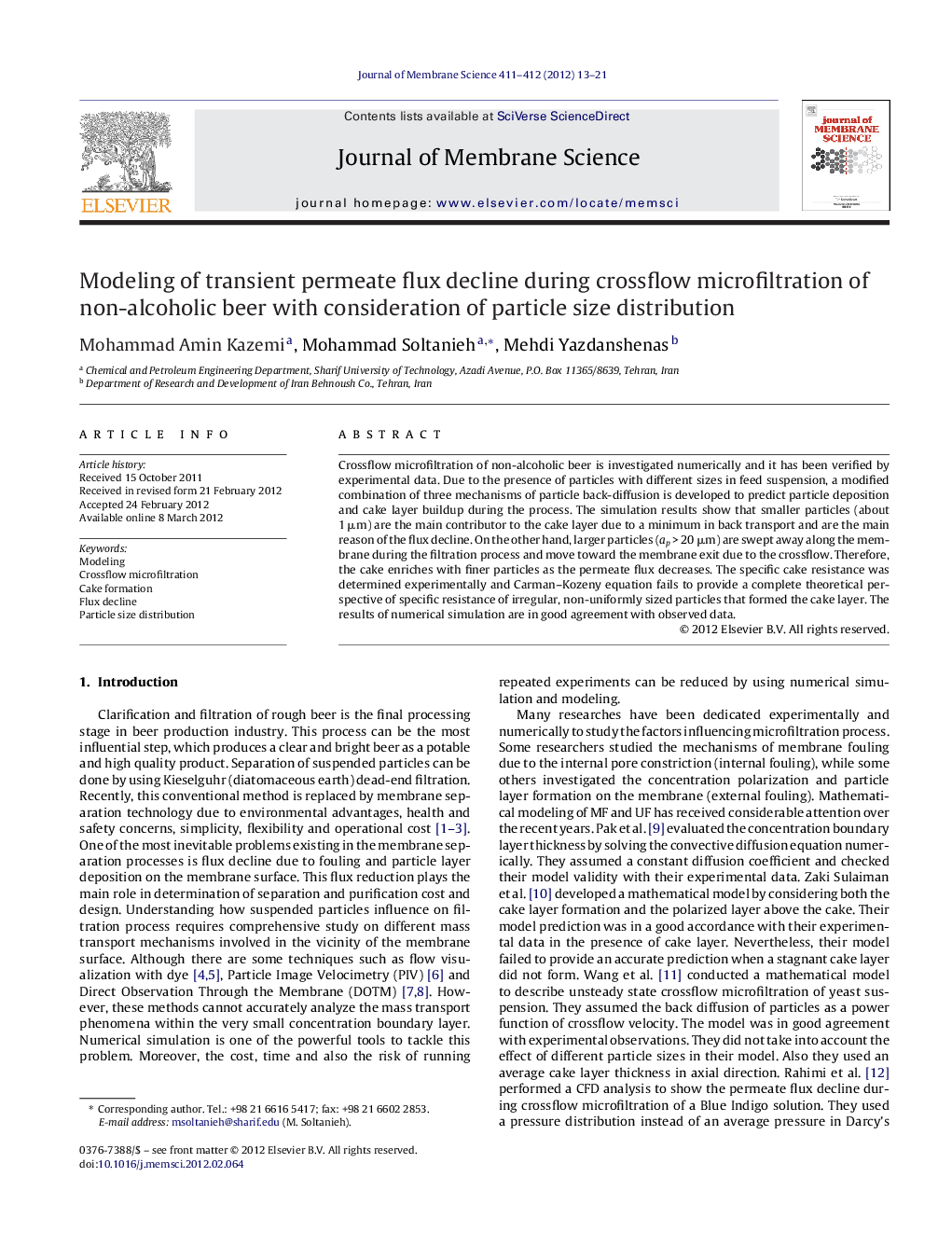| Article ID | Journal | Published Year | Pages | File Type |
|---|---|---|---|---|
| 634851 | Journal of Membrane Science | 2012 | 9 Pages |
Crossflow microfiltration of non-alcoholic beer is investigated numerically and it has been verified by experimental data. Due to the presence of particles with different sizes in feed suspension, a modified combination of three mechanisms of particle back-diffusion is developed to predict particle deposition and cake layer buildup during the process. The simulation results show that smaller particles (about 1 μm) are the main contributor to the cake layer due to a minimum in back transport and are the main reason of the flux decline. On the other hand, larger particles (ap > 20 μm) are swept away along the membrane during the filtration process and move toward the membrane exit due to the crossflow. Therefore, the cake enriches with finer particles as the permeate flux decreases. The specific cake resistance was determined experimentally and Carman–Kozeny equation fails to provide a complete theoretical perspective of specific resistance of irregular, non-uniformly sized particles that formed the cake layer. The results of numerical simulation are in good agreement with observed data.
► Modeling of transient flux in crossflow MF of rough beer was performed. ► Predict the cake layer composition with different particle sizes at each time step. ► Effect of particle sizes on membrane fouling and cake layer formation studied. ► Better agreement of model with data considering particle size distribution (PSD).
